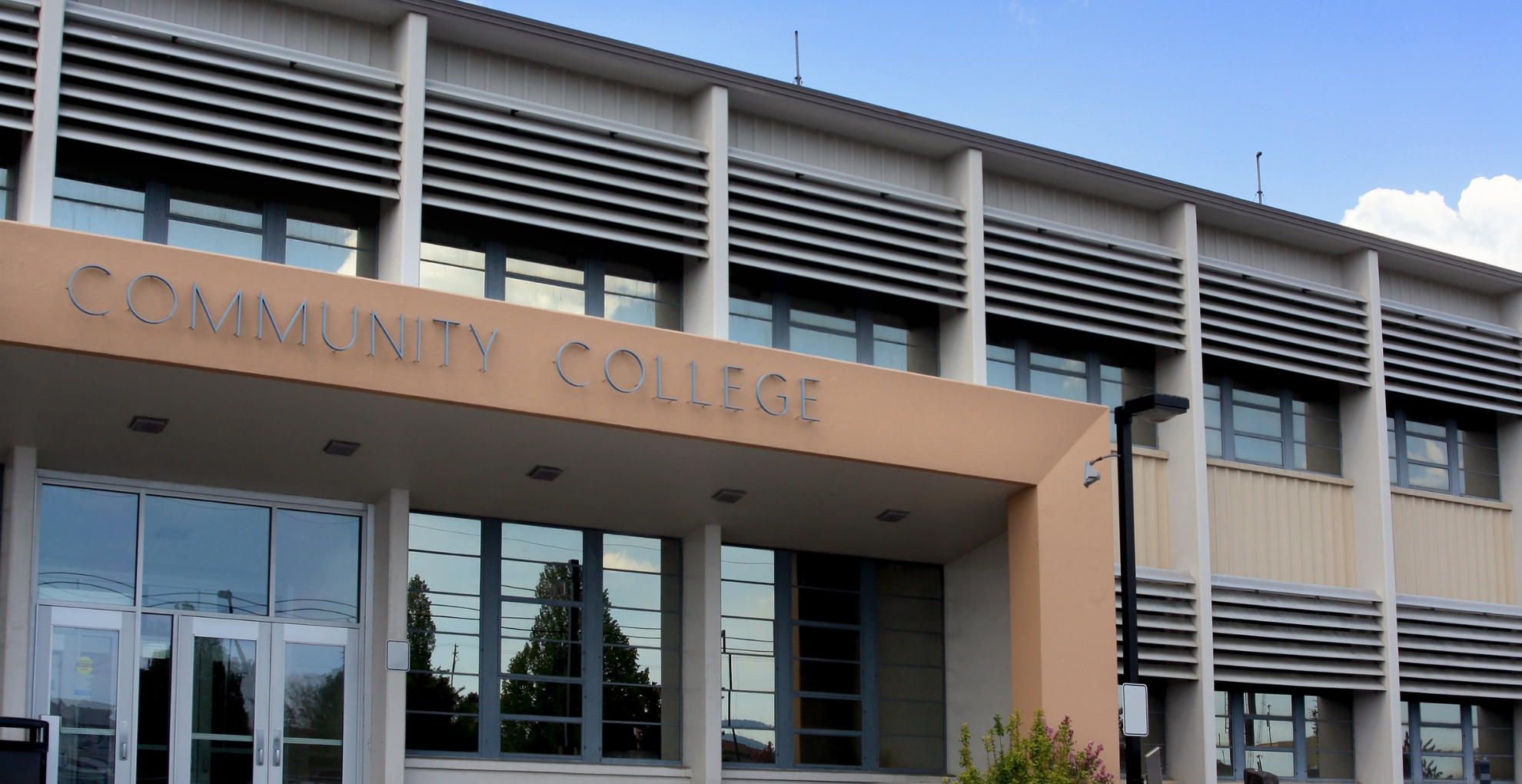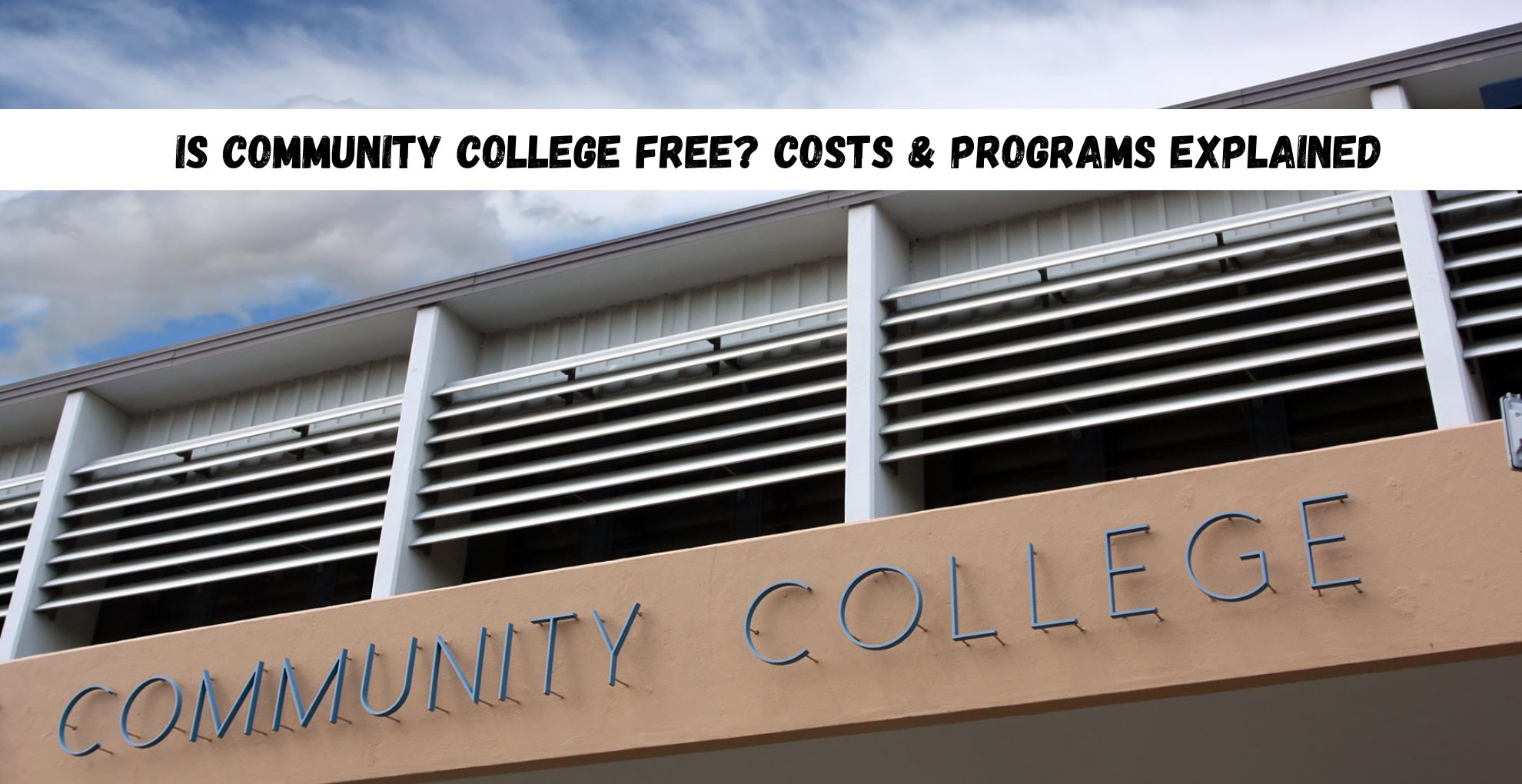For many students, the dream of a college education is too often overshadowed by a simple, daunting reality: the cost. As tuition prices continue to rise across the country, more people are looking for affordable alternatives. That’s where community college comes into focus. With shorter programs, career training, and the potential for transfer to four-year universities—all at a lower cost—it’s easy to see the appeal. But is community college free?
It’s a simple question with a more complex answer. In this article, we’ll break down what community college costs, which states offer tuition-free community college, and how you can take advantage of these programs to save money while earning your degree. Whether you’re a high school senior, an adult learner, or a parent helping your child plan for college, this guide is for you.
What Is Community College?
Community colleges are two-year public universities that provide a range of academic and practical programs. They are sometimes known as junior or technical colleges. Before moving to a four-year institution, students can obtain technical certifications, associate degrees, or the first half of a bachelor’s degree.
These institutions are essential to increasing access to postsecondary education. Numerous community colleges have flexible schedules, lower class sizes, and more reasonably priced tuition, and they accept students of all ages, backgrounds, and educational levels. They have also been at the forefront of a national conversation in recent years about making education more affordable, if not free.

Understanding the Costs of Community College
One of the biggest reasons students choose community college is the cost, but that doesn’t always mean it’s free. The average in-state tuition for a public two-year college ranges from $1,500 to $10,500 per year. Out-of-state students can expect to pay significantly more—anywhere from $4,500 to $16,500 annually.
But tuition isn’t the only expense.
Hidden and Additional Expenses
In addition to tuition, students frequently incur unforeseen expenses that mount up rapidly. These consist of:
Textbooks and supplies: Just the books can run you hundreds of dollars every semester.
Fees for labs and technology: Particularly for courses involving science or computers.
Transportation: Options include parking permits, gas, and public transportation.
Living costs: Include accommodation, food, and utilities, particularly if you’re living alone or away from home.
Some community colleges make an effort to lessen this load by providing housing assistance, reasonably priced dining options, and textbook rental programs. However, these expenses may pose difficulties, particularly for low-income students attempting to juggle employment and education.
What Does “Free Community College” Really Mean?
The idea of free community college has gained traction, but it’s important to understand what’s covered. In most cases, when we say “free,” we’re talking about tuition-free programs, not a full ride that covers every single expense.
Many states now offer “Promise” programs or state-sponsored scholarships that make community college tuition-free for eligible students. But each program has different rules and funding structures.
First-Dollar vs. Last-Dollar Grants
Things become a little complicated at this point, but understanding is essential. Before receiving any more financial help, including federal Pell funds or scholarships, first-dollar funds are credited to a student’s tuition. This implies that your entire college experience will be considerably cheaper if you are eligible for a first-dollar grant, which may allow you to use other help to pay for expenses like books, supplies, or transportation.
Conversely, last-dollar awards are given out only after all other help options have been exhausted. These grants usually don’t help with living expenses or supplies, but they do cover the remaining tuition balance. Since the majority of state programs use the last-dollar approach, some students may still require additional funding for non-tuition-related costs.
Which States Offer Free Community College in 2025?
As of this year, 35 states offer some form of tuition-free community college. These programs are usually available to in-state residents and often come with specific requirements like recent high school graduation, income thresholds, or full-time enrollment.
Let’s look at a few notable examples:
- Tennessee Promise: One of the earliest and most successful programs, offering free community college to recent high school grads who complete community service and attend mentoring sessions.
- California College Promise Grant: Covers tuition for income-eligible California residents at community colleges statewide.
- New York’s Excelsior Scholarship: Offers tuition-free education at public colleges (including community colleges) for students whose families earn under $125,000 per year.
Each program is slightly different. Some focus on recent high school grads, others on adult learners. A few even offer stipends for living expenses, though those are rare.
To check if your state offers free community college, visit your state’s higher education website or talk to a financial aid officer at a local college.

Eligibility Requirements for Free Community College
Eligibility varies by state and program, but some common factors include:
- Residency: You usually need to be a legal resident of the state offering the program.
- Income level: Many programs are income-based, offering support only to low- or middle-income students.
- Academic performance: A minimum GPA (often 2.0 or higher) may be required.
- Enrollment status: Full-time enrollment is typically necessary, though some part-time options exist.
- FAFSA submission: Most programs require that you complete the Free Application for Federal Student Aid (FAFSA).
Some programs are also limited to recent high school graduates, while others welcome adult learners returning to school.
How to Apply for Free Community College
Applying for tuition-free community college isn’t complicated, but it does take some planning. Here’s how to get started:
1. Research Your State’s Program
Start early. Each program has its eligibility requirements and deadlines. Visit your state’s Department of Education website for the most accurate information.
2. Complete the FAFSA
This is key. The FAFSA determines your eligibility for federal grants, state aid, and work-study. Even if you think you won’t qualify, fill it out—it’s required by most free college programs.
3. Gather Documentation
You may need:
- Proof of residency (like a driver’s license or utility bill)
- Income verification (such as tax returns)
- Transcripts or GED scores
4. Submit State Applications
Some states require an extra application for their Promise program, in addition to college admissions forms. Don’t miss these.
5. Stay on Track
Keep up your grades, submit any required community service hours, and reapply each year if necessary.
Tip: Many community colleges have advisors dedicated to helping students navigate these steps. Take advantage of their help!
Pros and Cons of Free Community College
Benefits
There are lots of positives to tuition-free community college, such as:
- Wider access to education for low-income or first-generation students
- Less student debt, freeing up money for future goals
- Stronger job prospects through career training programs
- Transfer pathways that reduce the total cost of a bachelor’s degree
Tuition-free college can be life-changing, especially for students who once thought college was out of reach.
Challenges
However, there are a few concerns:
- Funding sustainability: These programs often depend on state budgets, which can change with political leadership.
- Overcrowded campuses: Increased enrollment may strain resources, impacting class availability and support services.
- Limited coverage: Most programs don’t cover textbooks, supplies, or housing, leaving some students still struggling financially.
Still, for many, the benefits far outweigh the drawbacks.
Other Ways to Make Community College Affordable
If you don’t qualify for free tuition in your state, don’t worry—there are still ways to reduce costs:
- Apply for scholarships: Sites like Bold.org, Scholarships360, and CollegeVine offer lists tailored to community college students.
- Look into work-study: If you qualify through the FAFSA, work-study can provide part-time jobs to help with expenses.
- Choose budget-friendly living options: Living at home or commuting can save thousands per year.
- Buy used or digital textbooks: Or see if your college offers textbook rentals or open educational resources (OER).
The key is to explore every option. Community college is already more affordable than traditional universities, and with the right support, it can be even more cost-effective.

FAQs About Free Community College
Is community college free in every state?
No. As of 2025, around 35 states offer some form of tuition-free community college, but eligibility varies.
Do free programs cover books, supplies, or housing?
Most cover tuition only. Some first-dollar programs may help with extra costs, but it depends on the state.
Can out-of-state students qualify?
Generally, no—you must be a resident of the state offering the program.
Is FAFSA required to apply?
Yes. Most programs use FAFSA to determine eligibility and apply last-dollar funding.
Can I transfer to a four-year university after community college?
Absolutely. Many community college students go on to earn bachelor’s degrees at four-year universities. Be sure to choose transferable credits and consult with an academic advisor.
Final Thoughts: Is Community College Free Worth It?
Tuition-free community college is more than simply a chance for millions of students nationwide; it’s a game-changer. It lowers financial stress, makes college more accessible, and provides opportunities for employment or additional study.
Even while not everyone can use it for free, and not all states provide it, the trend is expanding. Furthermore, community college can still be an inexpensive and worthwhile option even if you are not qualified for a Promise program, thanks to grants, scholarships, and other types of financial assistance.
If you have ever inquired, “Is community college free?” in multiple senses, the answer may simply be “yes.”




